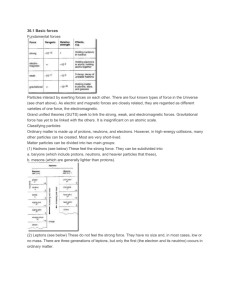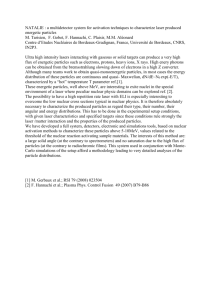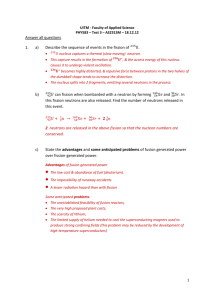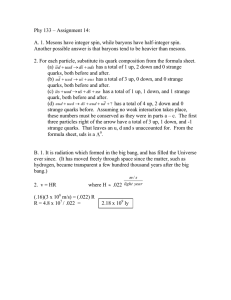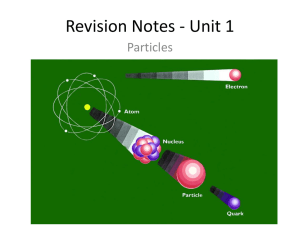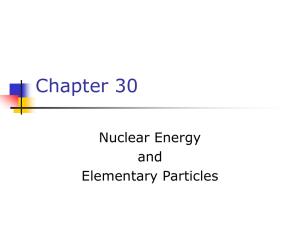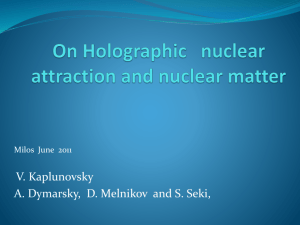Modified from College Physics, 8th Ed., Serway and Vuille. For the
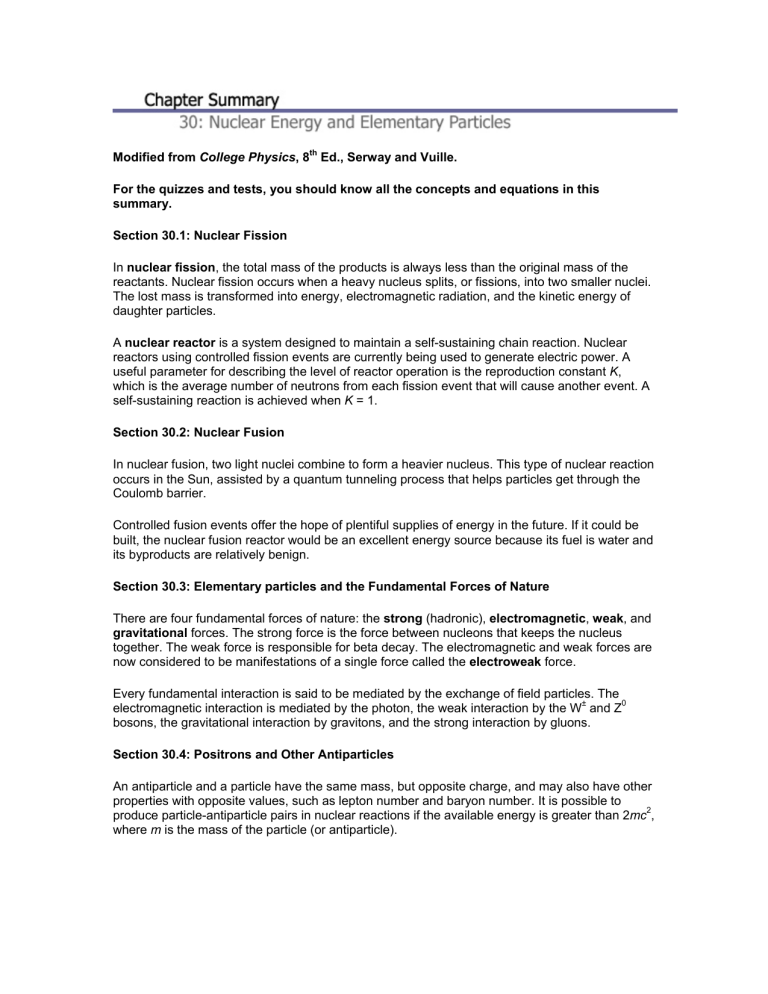
Modified from College Physics , 8 th
Ed., Serway and Vuille.
For the quizzes and tests, you should know all the concepts and equations in this summary.
Section 30.1: Nuclear Fission
In nuclear fission , the total mass of the products is always less than the original mass of the reactants. Nuclear fission occurs when a heavy nucleus splits, or fissions, into two smaller nuclei.
The lost mass is transformed into energy, electromagnetic radiation, and the kinetic energy of daughter particles.
A nuclear reactor is a system designed to maintain a self-sustaining chain reaction. Nuclear reactors using controlled fission events are currently being used to generate electric power. A useful parameter for describing the level of reactor operation is the reproduction constant K , which is the average number of neutrons from each fission event that will cause another event. A self-sustaining reaction is achieved when K = 1.
Section 30.2: Nuclear Fusion
In nuclear fusion, two light nuclei combine to form a heavier nucleus. This type of nuclear reaction occurs in the Sun, assisted by a quantum tunneling process that helps particles get through the
Coulomb barrier.
Controlled fusion events offer the hope of plentiful supplies of energy in the future. If it could be built, the nuclear fusion reactor would be an excellent energy source because its fuel is water and its byproducts are relatively benign.
Section 30.3: Elementary particles and the Fundamental Forces of Nature
There are four fundamental forces of nature: the strong (hadronic), electromagnetic , weak , and gravitational forces. The strong force is the force between nucleons that keeps the nucleus together. The weak force is responsible for beta decay. The electromagnetic and weak forces are now considered to be manifestations of a single force called the electroweak force.
Every fundamental interaction is said to be mediated by the exchange of field particles. The electromagnetic interaction is mediated by the photon, the weak interaction by the W ± and Z 0 bosons, the gravitational interaction by gravitons, and the strong interaction by gluons.
Section 30.4: Positrons and Other Antiparticles
An antiparticle and a particle have the same mass, but opposite charge, and may also have other properties with opposite values, such as lepton number and baryon number. It is possible to produce particle-antiparticle pairs in nuclear reactions if the available energy is greater than 2 mc
2 where m is the mass of the particle (or antiparticle).
,
Section 30.5: Classification of Particles
Particles other than photons are classified as hadrons or leptons. Hadrons interact primarily through the strong force. They have size and structure and hence are not elementary particles.
There are two types of hadrons: baryons and mesons . Mesons have a baryon number of zero and have either zero or integer spin. Baryons, which generally are the most massive particles, have nonzero baryon numbers and spins of 1/2 or 3/2. The neutron and proton are examples of baryons.
Leptons have no known structure, down to the limits of current resolution (about 10
–19
m).
Leptons interact only through the weak and electromagnetic forces. There are six leptons: the electron, e
–
; the muon, μ
–
; the tau, τ
–
;and their associated neutrinos, ν e
, ν
μ
, and ν
τ
.
Section 30.6: Conservation Laws and Section 30.7: The Eightfold Way
In all reactions and decays, quantities such as energy, linear momentum, angular momentum, electric charge, baryon number, and lepton number are strictly conserved. Certain particles have properties called strangeness and charm . These unusual properties are conserved only in those reactions and decays that occur via the strong force.
Section 30.8: Quarks and Color and Section 30.9: Electroweak Theory and the Standard
Model
Recent theories postulate that all hadrons are composed of smaller units known as quarks which have fractional electric charges and baryon numbers of 1/3 and come in six "flavors": up, down, strange, charmed, top, and bottom. Each baryon contains three quarks, and each meson contains one quark and one antiquark.
According to the theory of quantum chromodynamics , quarks have a property called color , and the strong force between quarks is referred to as the color force . The color force increases as the distance between particles increases, so quarks are confined and are never observed in isolation. When two bound quarks are widely separated, a new quark-antiquark pair forms between them, and the single particle breaks into two new particles, each composed of a quarkantiquark pair.



